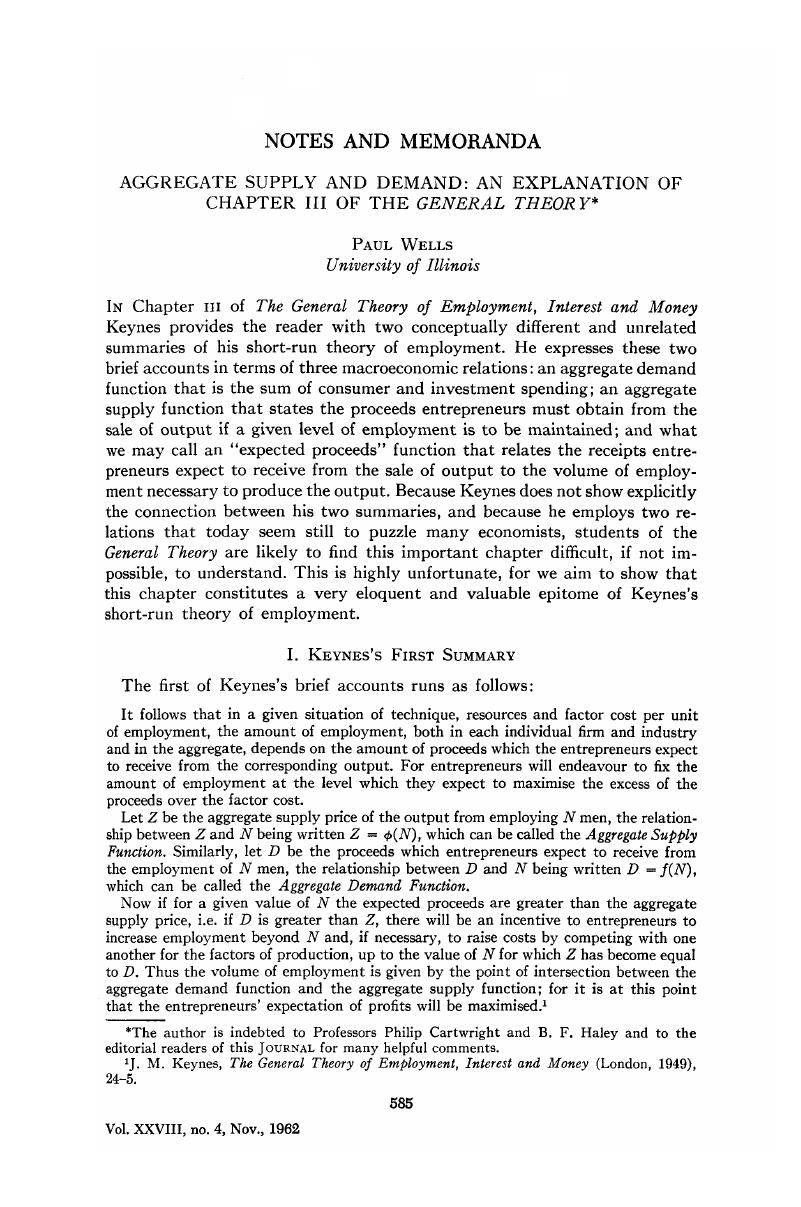Published online by Cambridge University Press: 07 November 2014

The author is indebted to Professors Philip Cartwright and B. F. Haley and to the editorial readers of this Journal for many helpful comments.
1 Keynes, J. M., The General Theory of Employment, Interest and Money (London, 1949), 24–5.Google Scholar
2 It should be noted that the above assumptions are mine and not Keynes's.
3
The assumptions made above that X′ > 0, X″ < 0, and X′″ = 0 guarantee that ![]() decreases as N increases. The proof is as follows:
decreases as N increases. The proof is as follows: ![]() . Thus dZ/dN = w[1 − XX″/(X′)2]. Hence
. Thus dZ/dN = w[1 − XX″/(X′)2]. Hence ![]() , which inspection shows to be positive.
, which inspection shows to be positive.
4 General Theory, 28–9.
5 Ibid., pp. 280–91.
6 Patinkin, D., Money, Interest, and Prices (Evanston, 1956), 222, 237, and 251 Google Scholar; also “Involuntary Unemployment and the Keynesian Supply Function,” Economic Journal, LIX, 360–83.Google Scholar
7 Additional support for this conclusion is to be found in chapters xx and xxi of the General Theory, and in Neisser, H., “Keynes's Aggregate Supply Function: Further Comments,” Economic Journal, LXXI, 850–2.Google Scholar